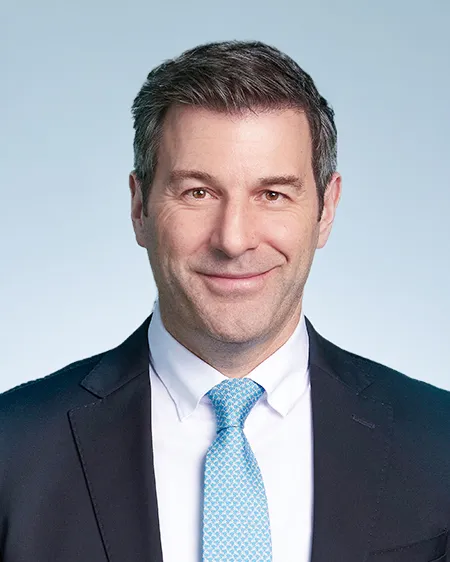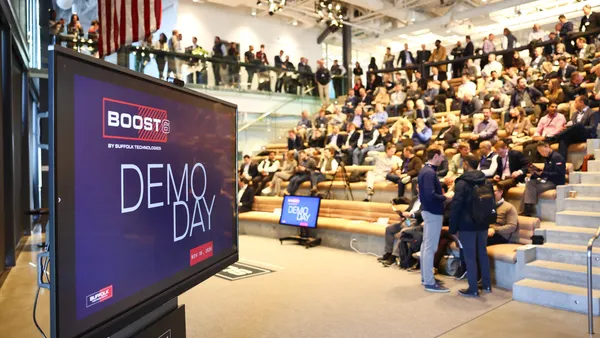Amid uncertainty stemming from President Donald Trump’s tariffs and elections around the world, WSP CEO Alexandre L’Heureux said in a Thursday earnings call that the firm has experienced “a very interesting start of 2025 and a very fluid environment.”
Still, L’Heureux expressed confidence in the Montreal-based firm’s ability to respond to global megatrends such as decarbonization, electrification, urbanization and supply chain resilience.
During WSP’s previous three-year strategic cycle, it made 15 acquisitions and added about 20,000 people to its headcount. However, the worst thing that can happen for mergers and acquisitions is instability and a lack of visibility into the future, L’Heureux said. He characterized the environment as “very unstable” at the moment.

“I think a lot of players are on the sideline and are waiting for good conditions to come back to look at taking actions. Nobody wants to sell at a discount,” L’Heureux said. “Nobody wants to get an asset for sale in an environment where the environment is not prospering.”
L’Heureux said the integration of Power Engineers, the Hailey, Idaho-based engineering and environmental consulting firm that it purchased in August 2024 for $1.78 billion, was progressing as planned.
Regarding Trump’s tariffs, L’Heureux said he was “not overly concerned now” because the company is focused on providing services, and local teams in its respective countries typically deliver work. He also noted that proposal activity in the U.S. continues to be solid.
“The beauty of our model is that the work that is conducted in the U.S. is conducted by U.S. citizens and paying taxes in the U.S. and providing revenue to the U.S. government,” L’Heureux said. However, “clients clearly are wondering, like all of us, where this will lead us.”
Sector watch
The Trump administration has made Infrastructure Investment and Jobs Act funding less certain, said L’Heureux, but broadly, he’s “highly confident” that the U.S. will continue to invest in the sector.
“I’m aware that a number of Republican congressmen would like to amend [the IIJA]. Longer term, I don’t know what the shape of the funding will look like,” L’Heureux said. “The one thing I know is that both the Republican Party and the Democratic Party are both committed to infrastructure spending.”
WSP’s critical infrastructure end markets — including industrial, advanced manufacturing, data centers and healthcare — continue to show strength, L’Heureux said, and “notably, data center demand has been a steady contributor.”
Investment in water infrastructure is trending positively across most of WSP’s geographies, L’Heureux said. In addition, the firm is seeing high demand for defense — a sector Dallas-based AECOM also shouted out in its recent earnings call.
“Defense in particular, via our long standing relationship with entities such as the U.S. Navy, Air Force and Army Corps of Engineers and many other entities globally, remain strong,” L’Heureux said. “Notably, we were recently appointed to a $1.5 billion, 10-year program with the U. S. Air Force to support site remediation and environmental consulting across its global assets.”
By the numbers
WSP reported revenues of 4.39 billion Canadian dollars ($3.15 billion) in the first quarter, up 22.4% from CA$3.59 billion in Q1 2024. The firm’s profits grew to CA$144.1 in Q1 2025, up 13.6% from the same period last year.
Backlog stood at CA$16.6 billion, a 16.6% increase from Q1 2024.
L’Heureux attributed the results to the firm’s focus on working capital management, a diversified platform and optimization under its new ERP platform.
WSP did see subpar performance in the Asia-Pacific region, but L’Heureux said the outlook for Australia and New Zealand remained positive in the medium and longer term. The firm also wracked up restructuring charges in its Europe, Middle East, India and Africa segment.
“We absorbed the costs, as I said, course-corrected and set up the business for future success. So this quarter there was a lot of that in [the Asia-Pacific] region,” L’Heureux said. “Do I expect there may be some more? Yeah, probably … but at the same time, we are seeing the backlog growing in those regions.”
The firm reaffirmed its financial guidance and said it expects North America to continue to lead its growth in 2025.















